Ancaster, Ontario, Canada
Architect: Tom McBroom (1991)
6,841 Yards, Par-71
Rating/Slope: 74.0/144
My Quick Review: Over-shaped in spots, but an excellent routing, strategic design and a wild and varied set of greens make this one of McBroom's best.
Heron Point is one of McBroom's earliest designs (1991) and, in my opinion, one of his best. While I think McBroom's best work is in Muskoka at Rocky Crest and Oviinbyrd, I believe Heron Point is his 3rd best golf course in Ontario (and was ranked number 27 in Ontario in my own rating of Ontario's top-50 courses... http://onegolferstravels.blogspot.ca/2012/07/my-ontario-top-50-golf-courses.html ).
The routing is excellent. The golf holes lay naturally over a mix of rolling terrain, low-lying wetlands, ponds and fescue areas. Giving a feeling of no-great-landform-left-behind, McBroom was not afraid to move the golfer up, down and across some wildly undulating terrain. Though I think some architects would have shied away from some of the more severe elevation changes, McBroom used them to maximum effect.
Though the holes fit naturally on the land, my main criticism is that (once again) McBroom shows a lack of restraint -- it seems great land and strategic design are insufficient as McBroom lined his fairways and greens with bizarre and offensive containment mounding and over-bunkered in areas where the land alone made for a great hole.
Hole-by-Hole Photo Tour
The 1st and 10th holes are similar in appearance, though the 10th is probably the better of the two holes. Well struck tee shots will crest the hill on the 1st, which features anti-strategic bunkering (a lack of restraint) and a wonderful green and green site with a nasty false-front. The 1st is the perfect microcosm.
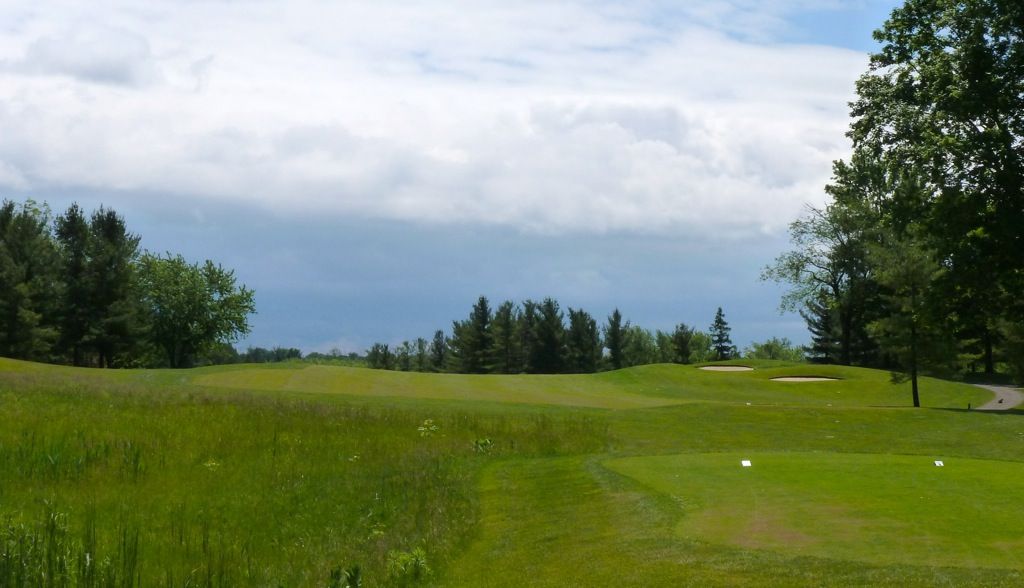

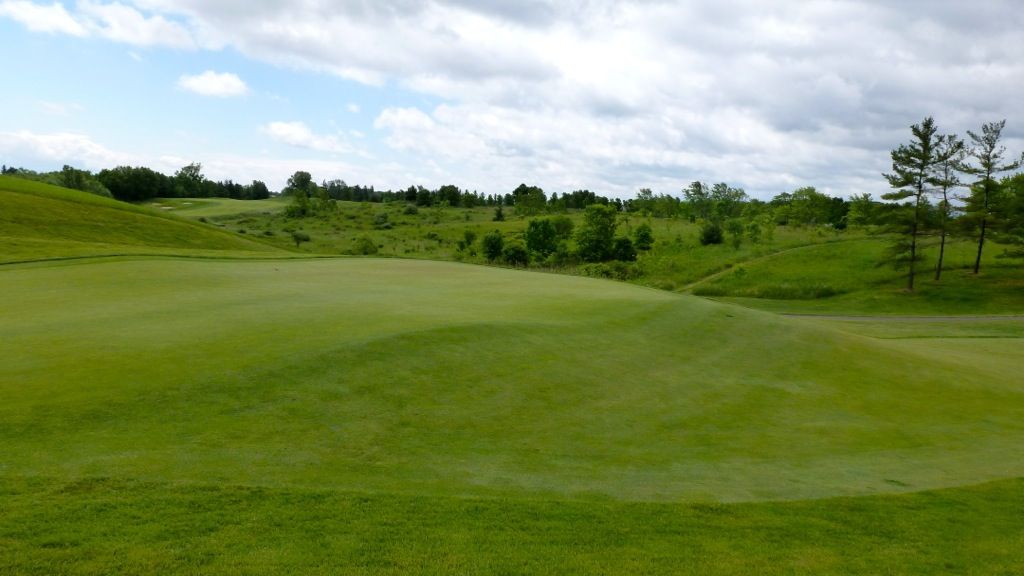
The 2nd and 3rd holes are routed over the dullest land on the course but a duo of great greens keeps the golfer interested.
The 2nd features a series of top-shot bunkers. Perhaps misunderstood in modern architecture but a design feature I applaud nonetheless:
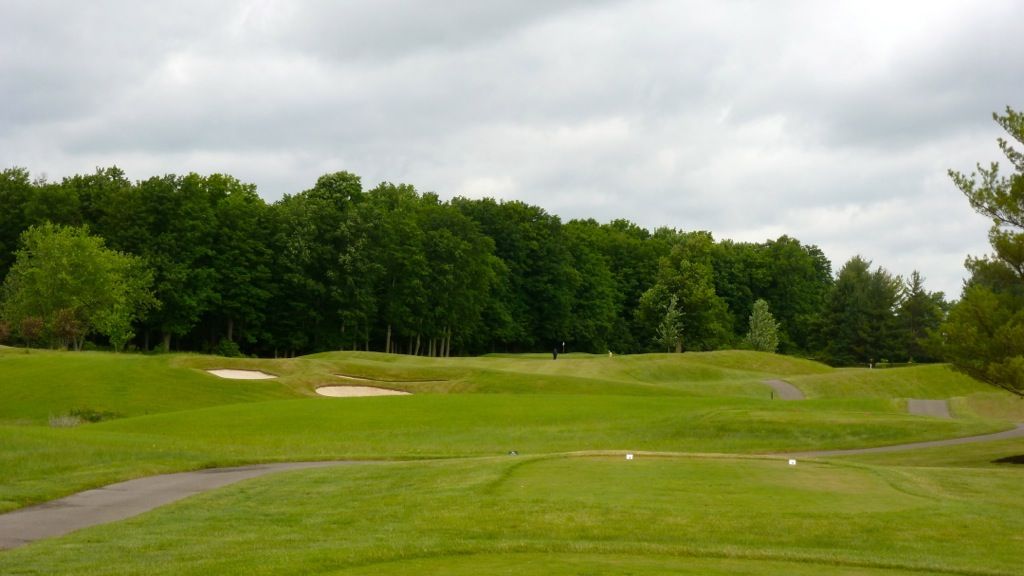
The 3rd is a completely uninteresting looking par-3 with a fascinating green:
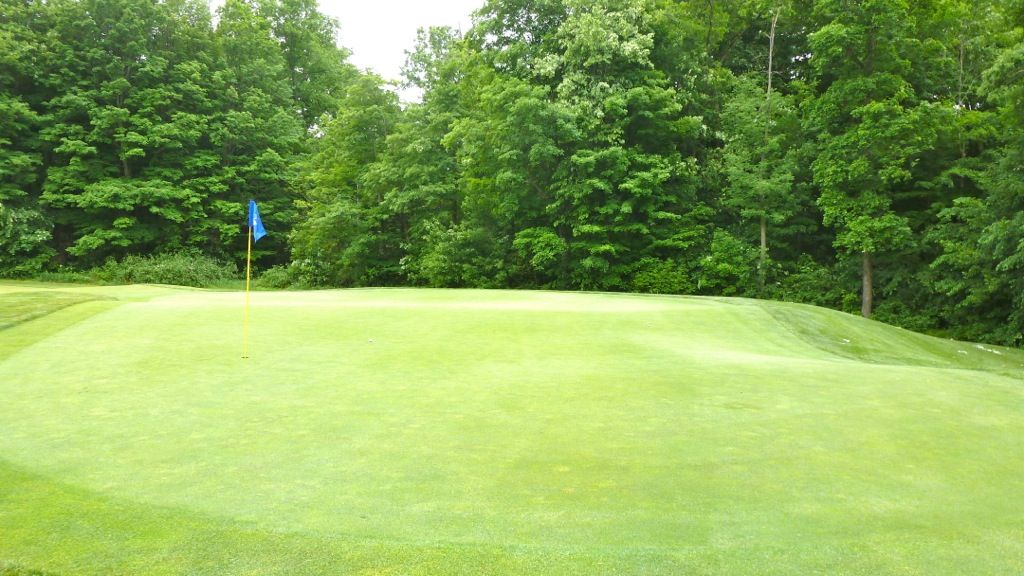
The 4th is an excellent, monstrous par-5. Though the mowing lines over the bunker are a bit of an issue, the strategic intent is there. The wildly undulating 4th fairway may have been flattened by many architects and the tiny fortress green is a risk many architects would not have taken, but everything works on this great hole.
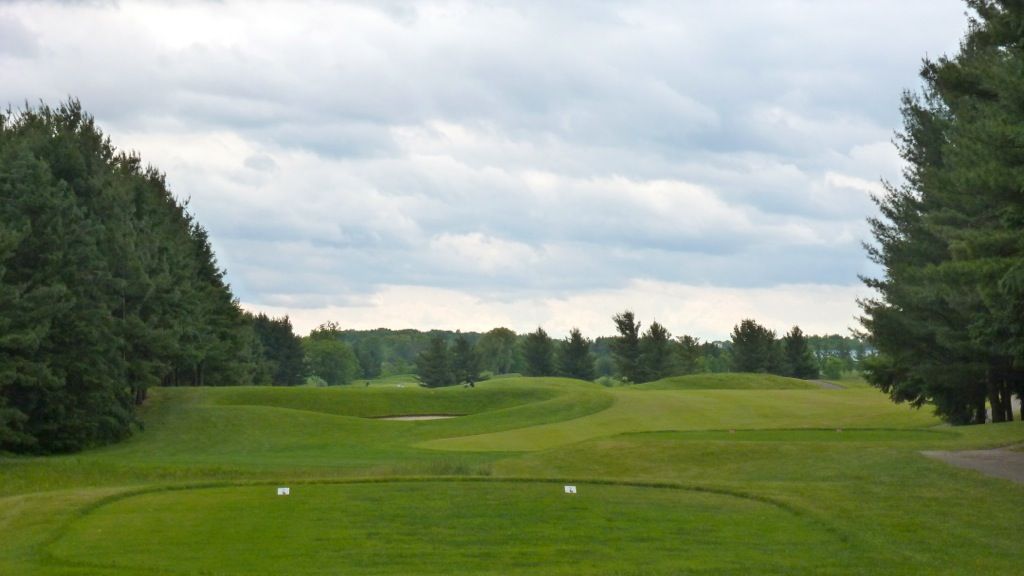
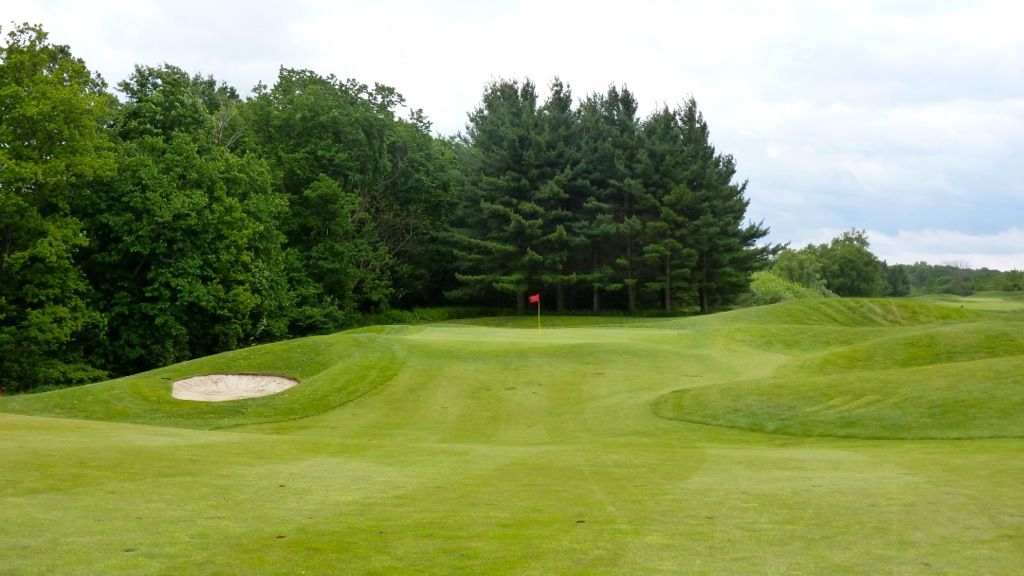
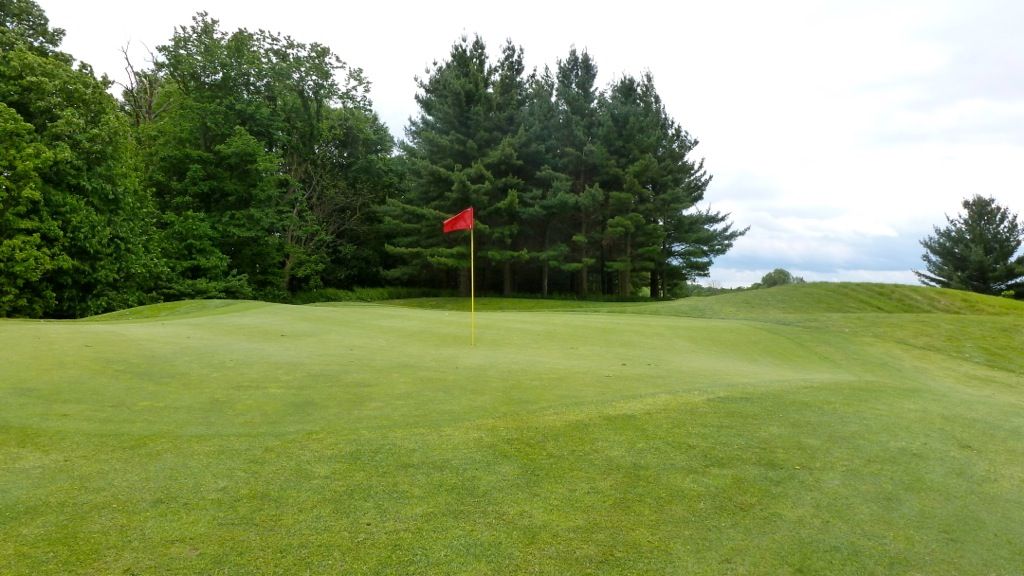
The mid-length par-4 5th is another strong hole with the preferred line protected by a longer carry over the bunkers on the left. Containment mounding surrounding the 5th green is nothing less than offensive.
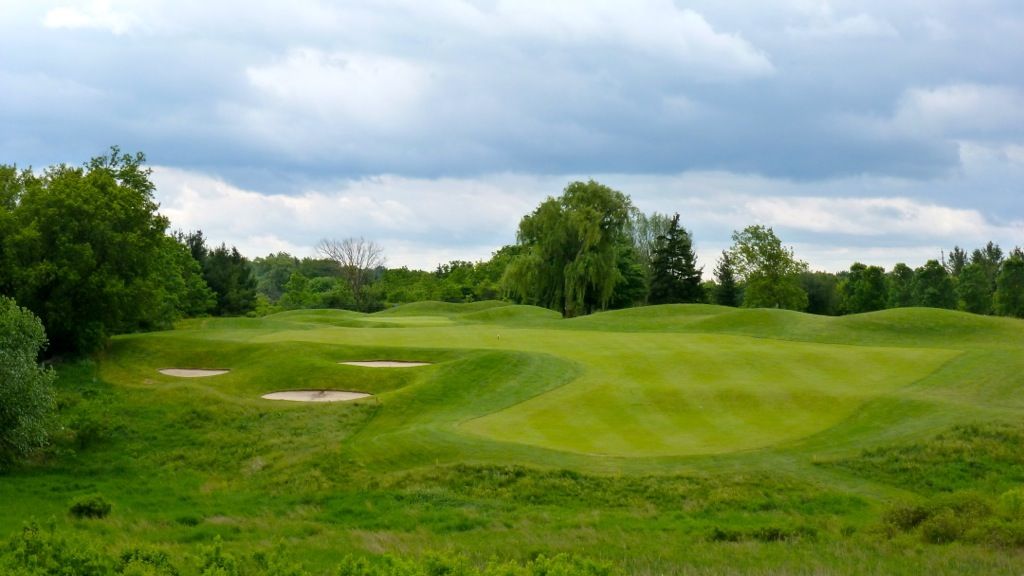
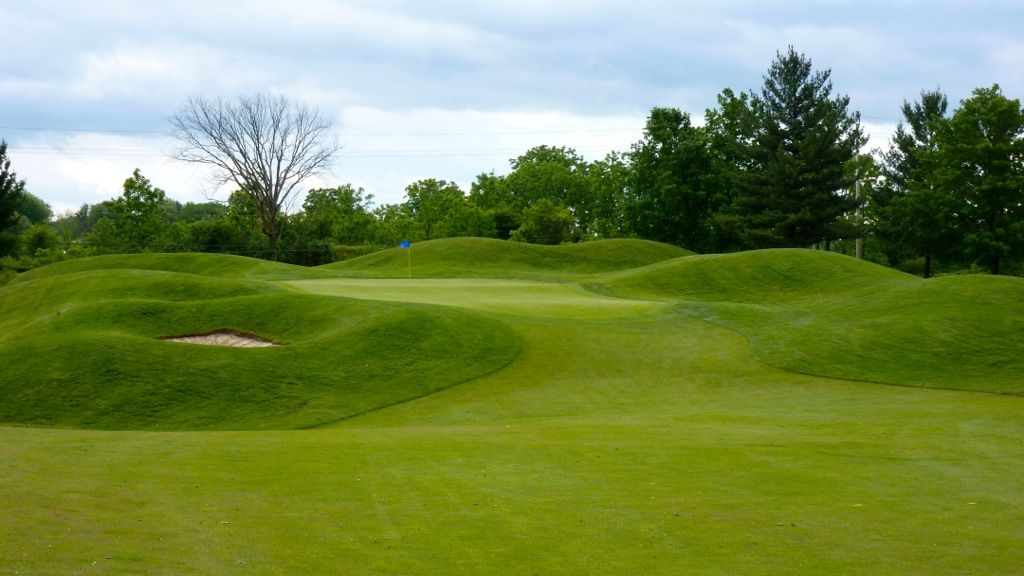
Another blind LZ on the reachable par-5 6th. Bunker placement is a bit of a head-scratcher as they steer the golfer farther left than is advisable, toward the rough-line on the left. Though the tee shot is over relatively flat-land, the 2nd and 3rd shots plunge into a valley and will play to a green tucked neatly into the mounding.
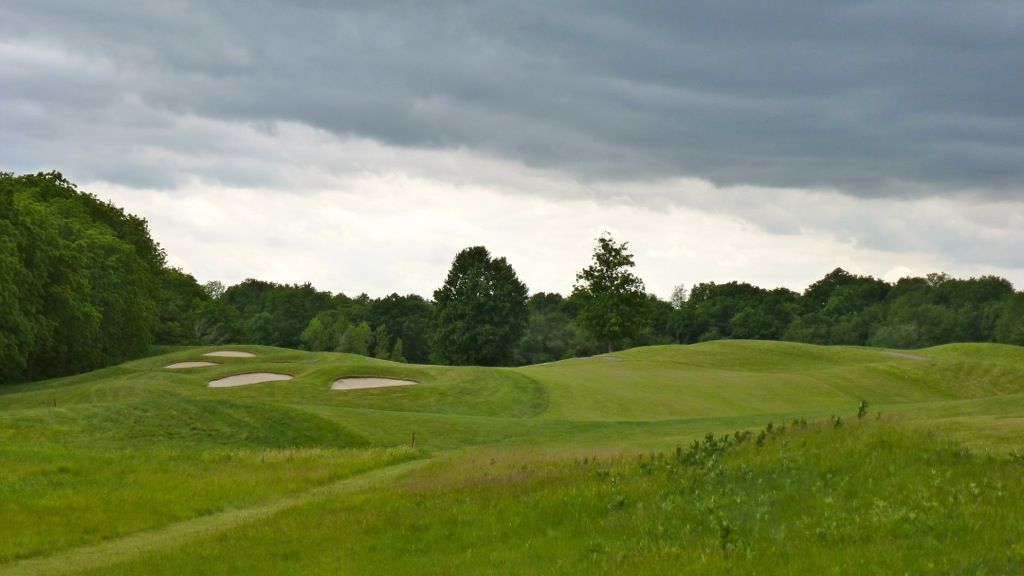

Simple and solid strategic design at the 7th. The bold play is over the duo of bunkers on the left.
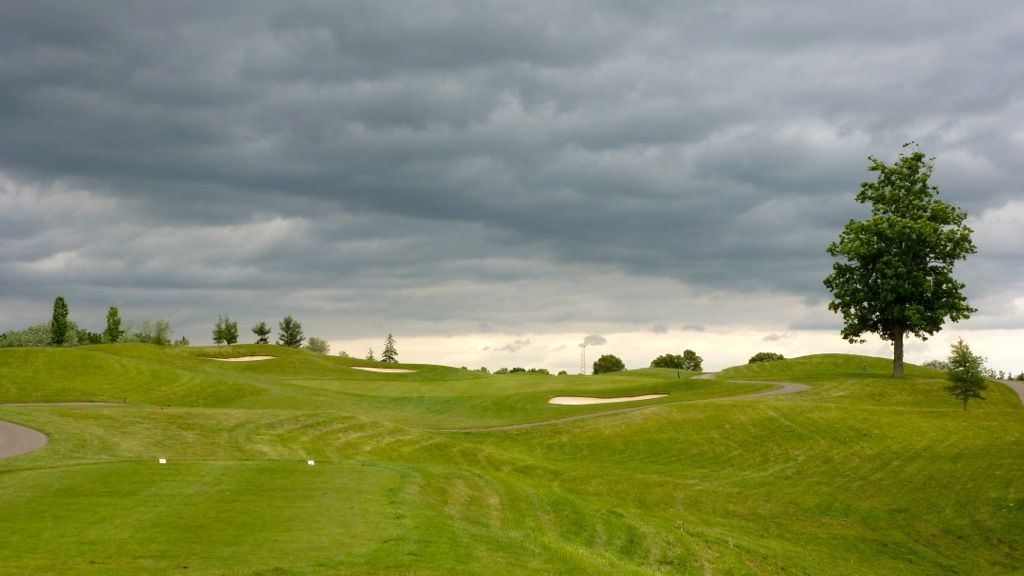
Bailing out right leaves a blind approach...
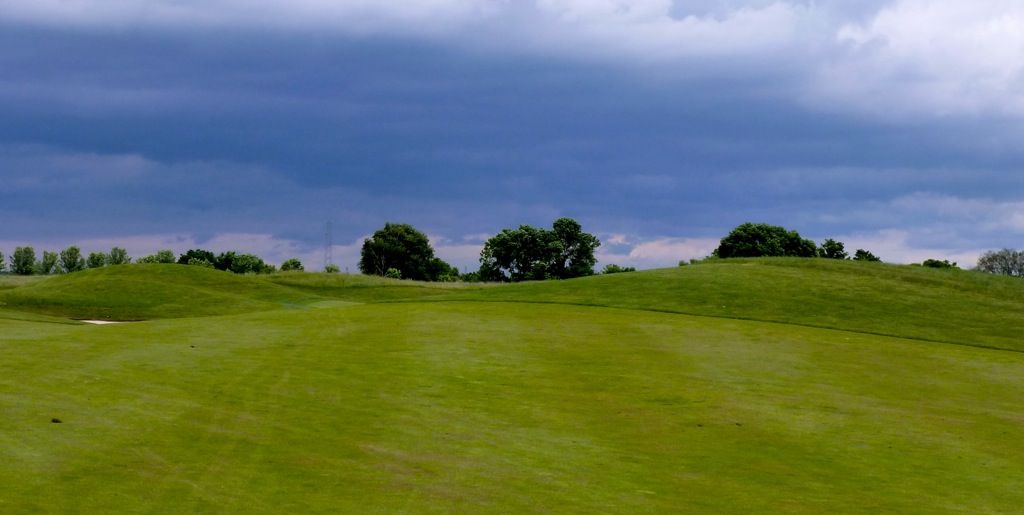
While playing left leaves a view of the green and a simpler angle of approach

The 8th is a scenic and difficult downhill par-3 playing some 175 yards.
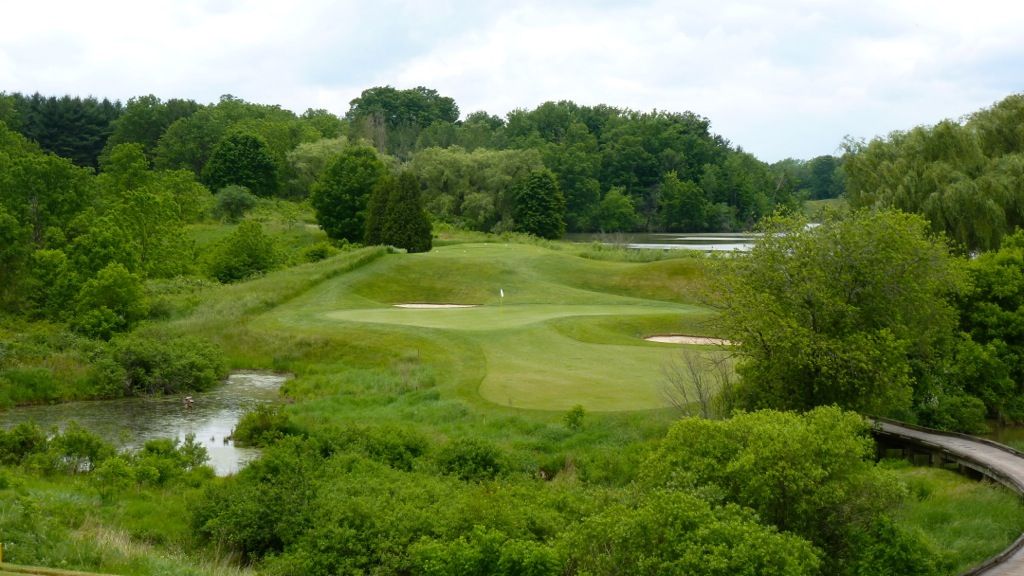
The 9th and 18th feature interesting routing choices, requiring long (LONG) forced-carries to reach the fairway. At the 9th, which features the shorter forced-carry, one must carry their tee shot 200 yards slightly uphill to reach the fairway where a very difficult approach will wait.
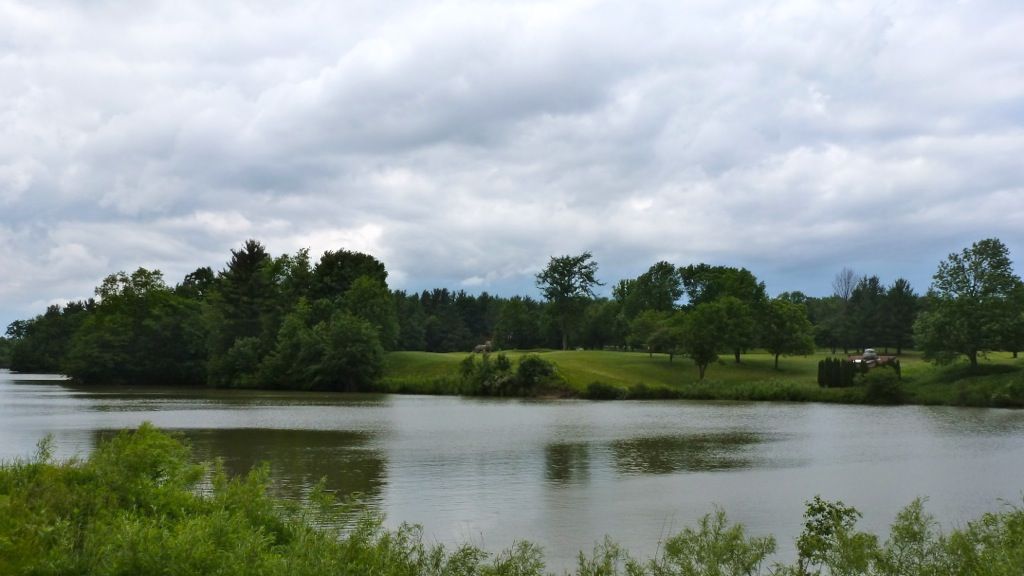
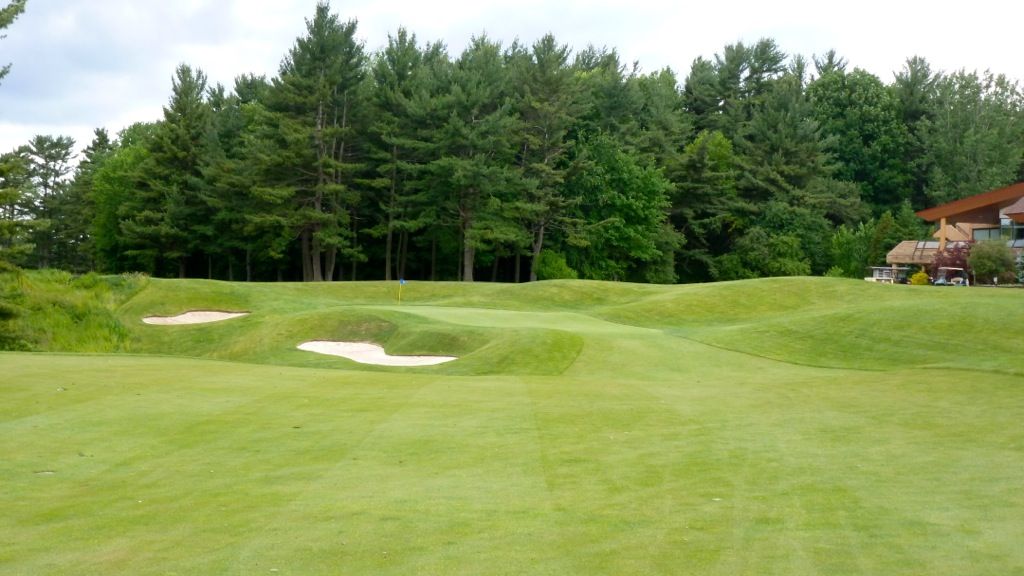
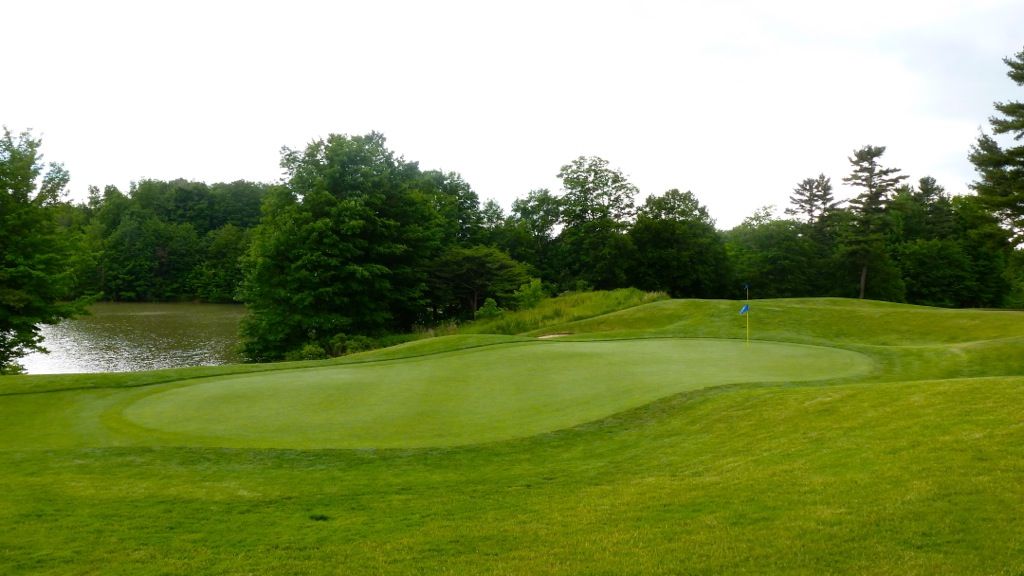
The 10th is one of the best holes on the course. The fairway falls away to the right and the ideal line is protected by a nest of deep bunkers on the left.
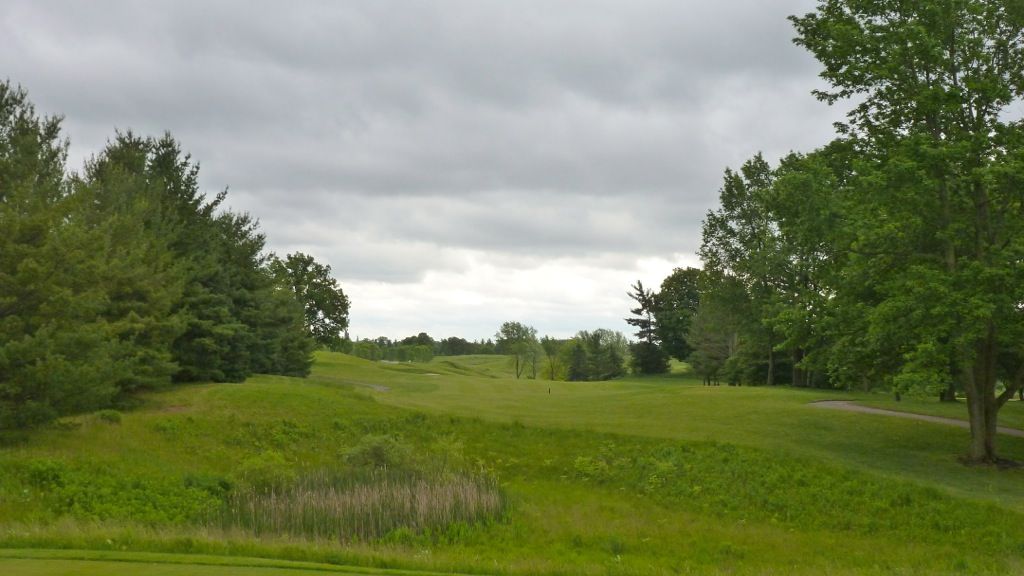
The green's surface is entirely blind from all angles, but approaches from the right must be played over a series of very deep bunkers.
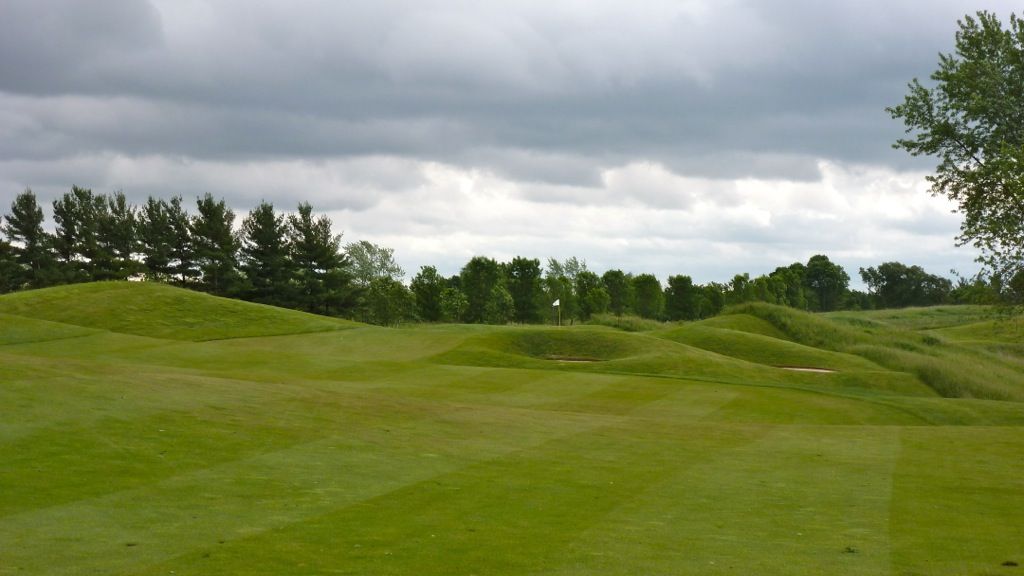
Bunkering at the par-3 11th intimidates the golfer into missing left, but the tilt of the green means that a miss in the bunkers is preferred.
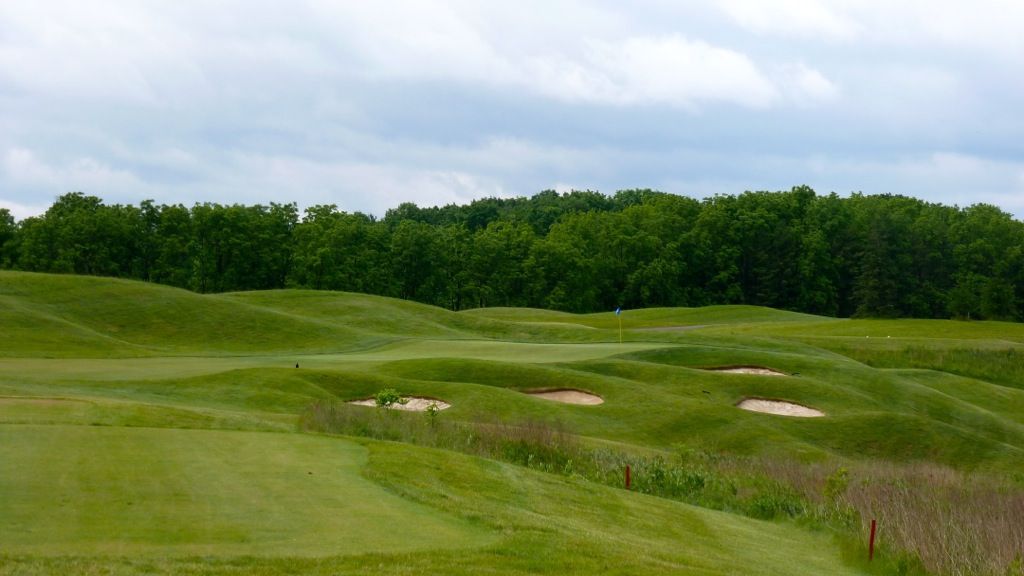
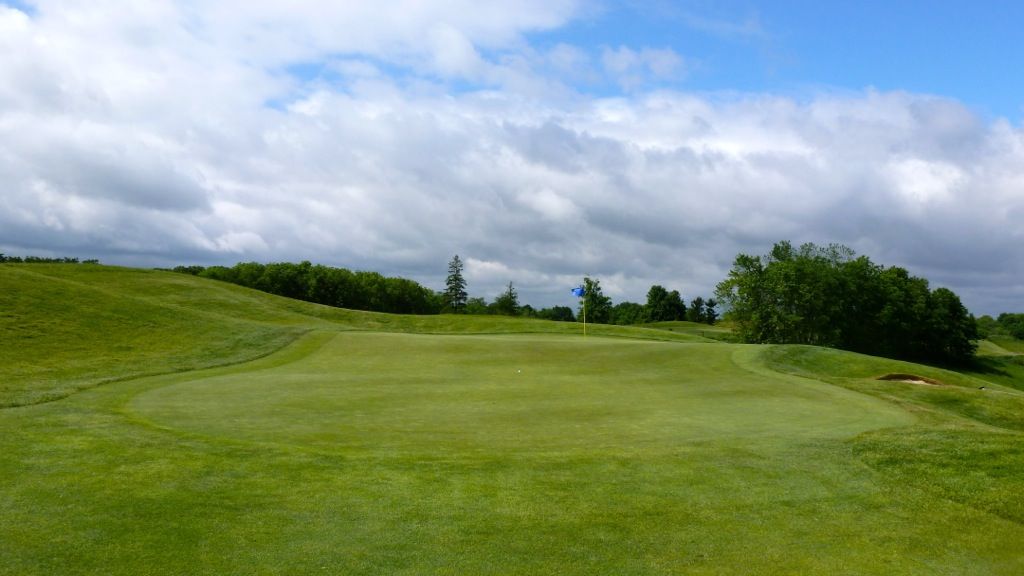
The par-5 12th is the narrowest hole on the golf course and a hole I believe was forced. It's not often that par-5 holes are called connectors, but I think this one is.
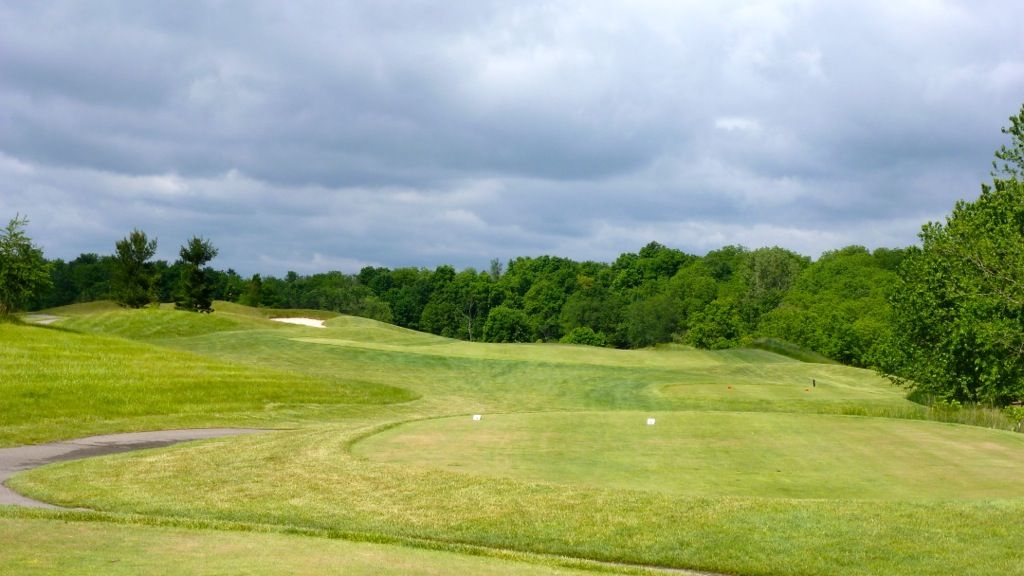

The all-carry 200 yard 13th is the second connector hole in a row. There is more room to miss than appears from the tee.
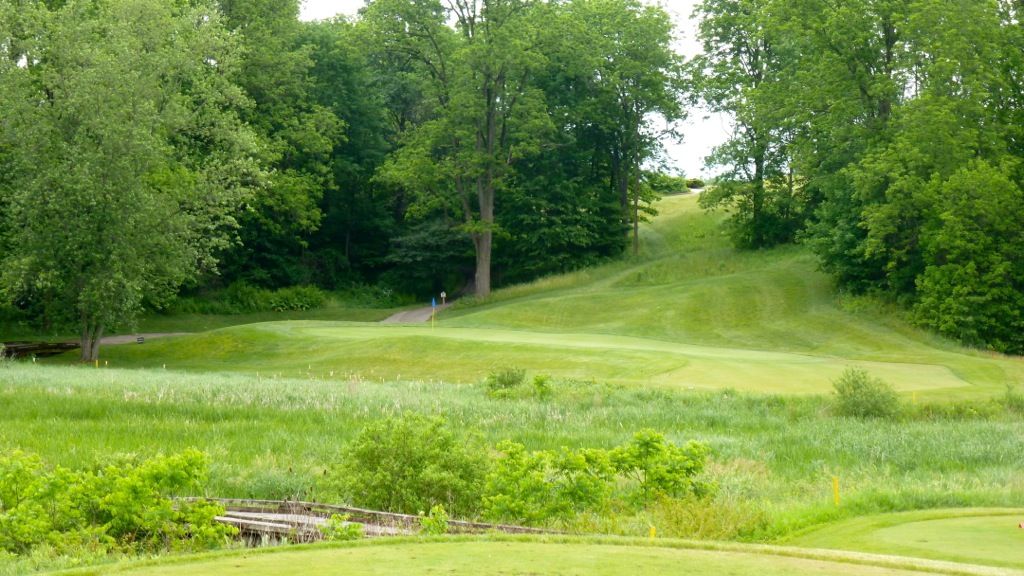
A classic down and up par-4 at the 14th. Little room to miss from the tee.
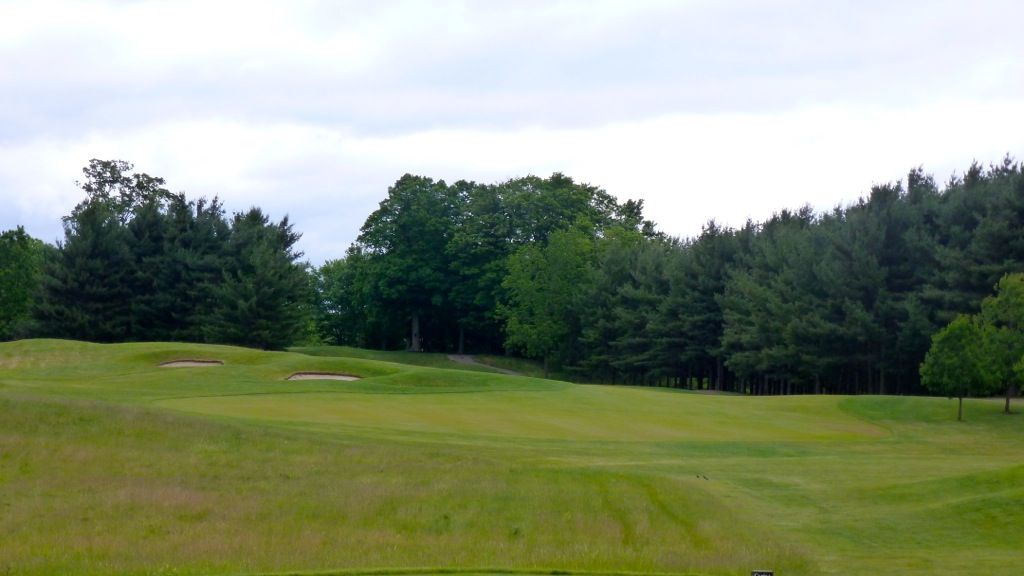
Interestingly, bunkers on the far side of this hill are blind from the tee and golfers than find them are sure to be at least a little upset.
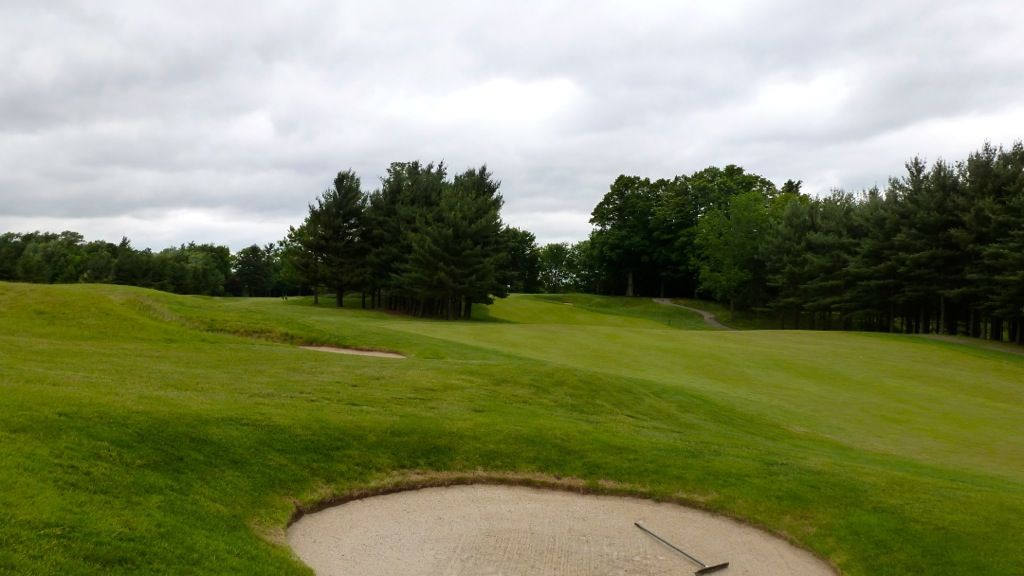
The 15th is the shortest par-4 on the course, though it is far from drivable. Though the tee shot appears narrow, there is quite a bit of room once the golfer crests the hill.

Playing away from the fairway bunker will leave a blind approach from a terrible angle.
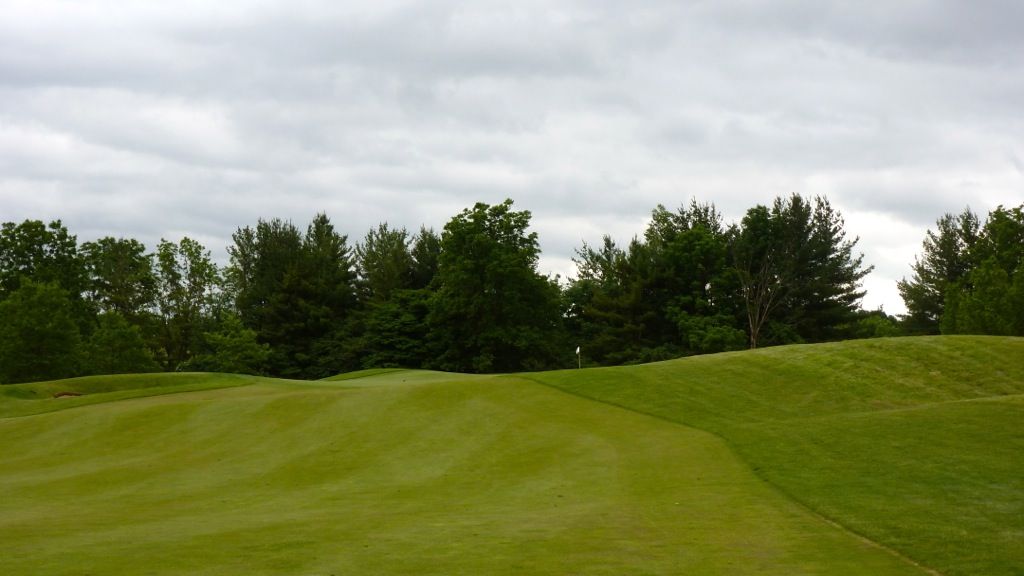
On a golf course full of wild greens this one may be the most extreme. A false-front and a drop-off on the back portion of the green, coupled with some serious internal contour, means that this mid-sized green is a very elusive target.
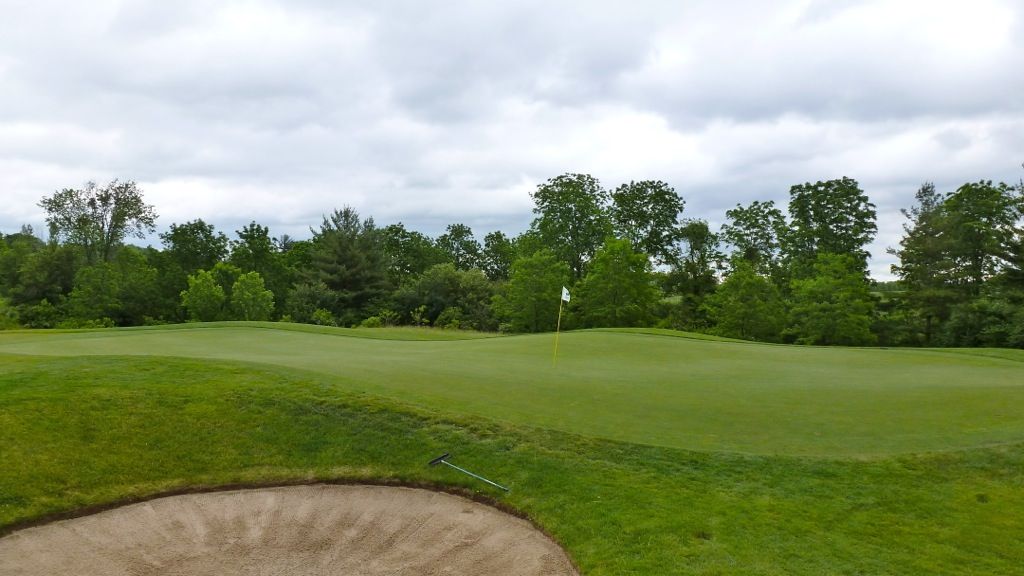
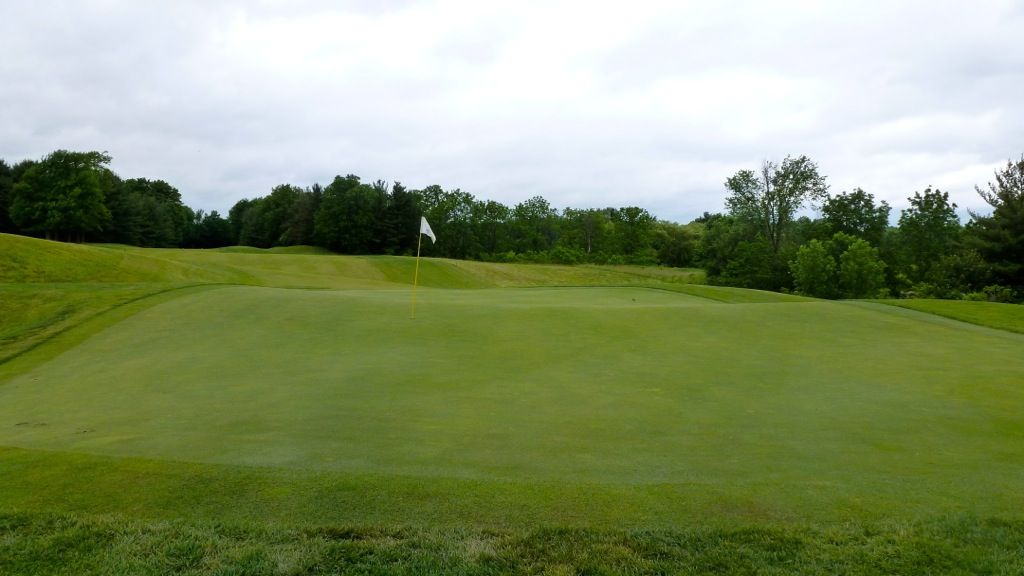
The short 16th is a great juxtaposition to the daunting 17th.
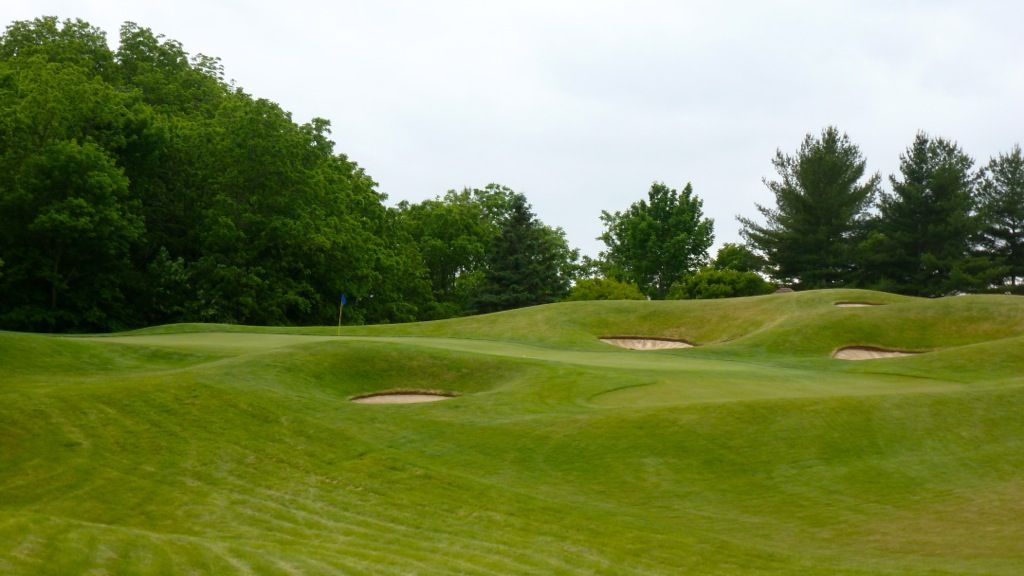
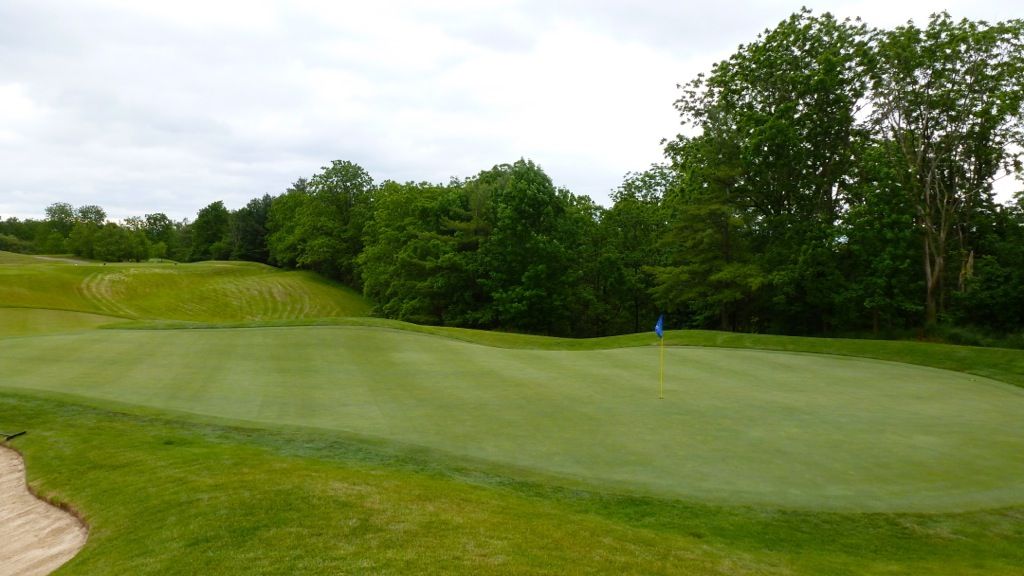
Like the 16th at Crystal Downs, the lack of definition on this tee shot can lull the golfer into a hitting a poor shot, but length and accuracy are required as reaching this long par-5 in three is no guarantee.
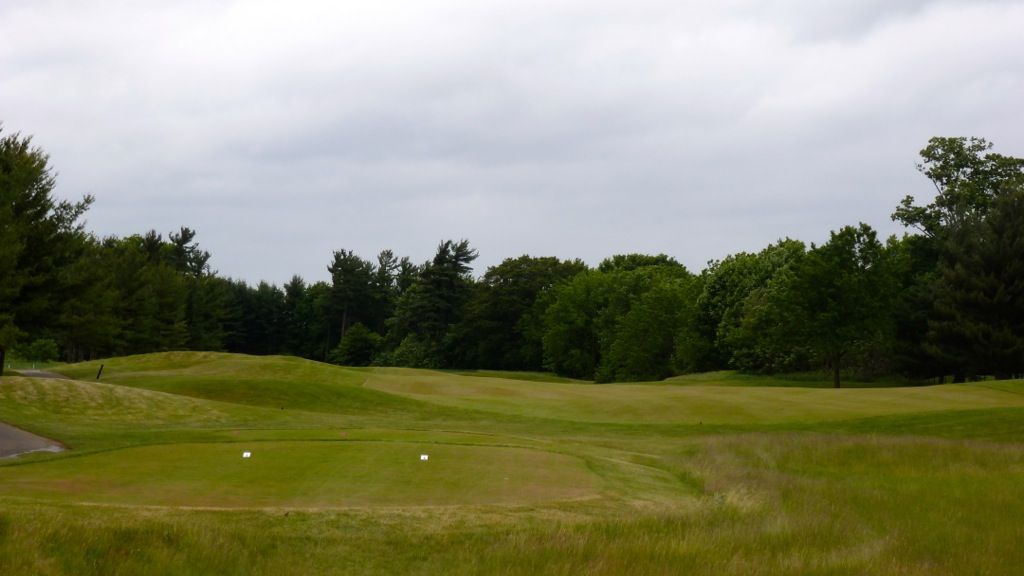
Like the 4th the 17th is routed over some very large rolls. The lay-up area is narrowed by a couple of bunkers.
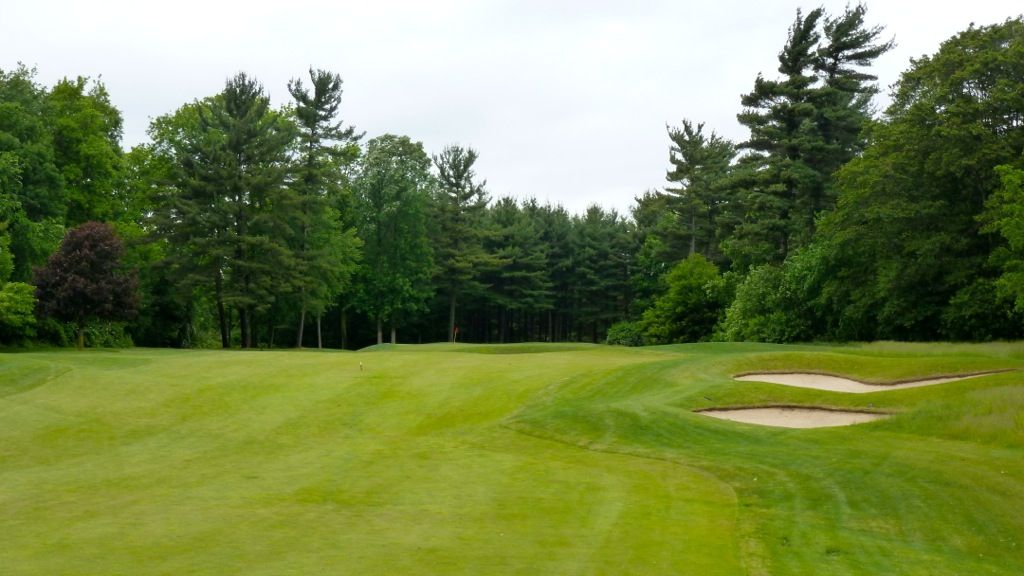
And the green and green site are well done.
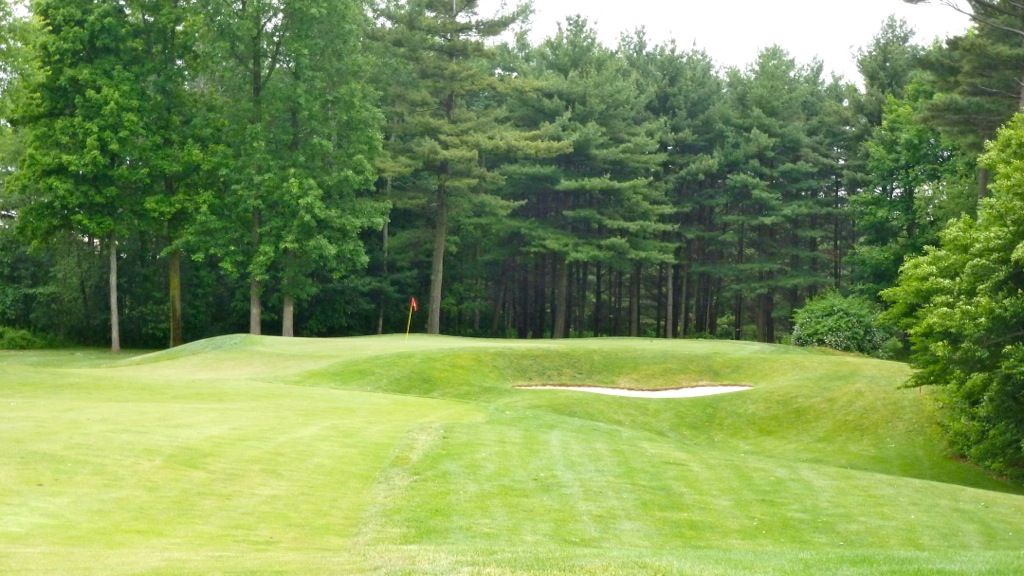
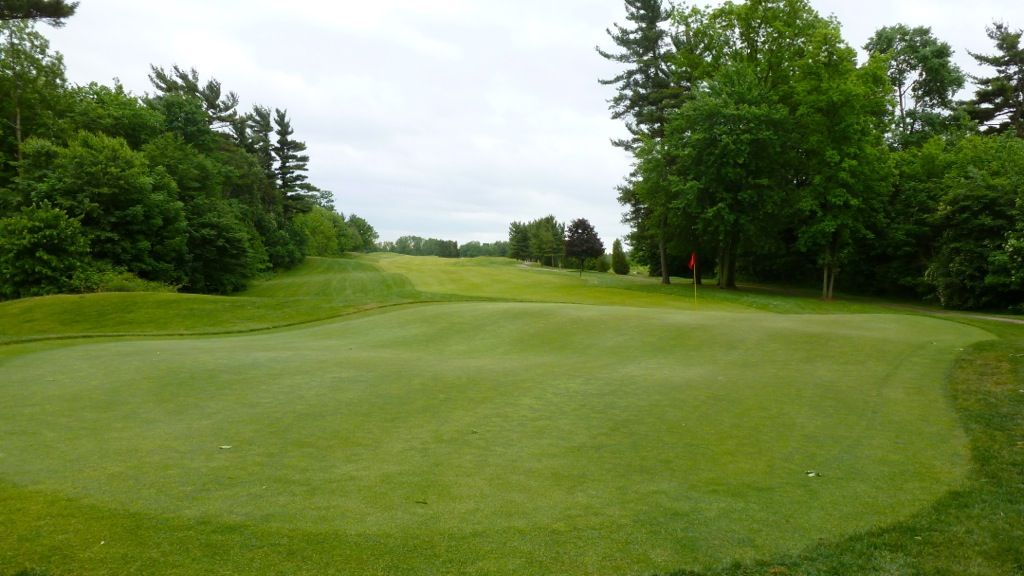
If the 18th tee shot is one that you have to hit with a one-shot lead, your knees will shake. From the member's tees there is a forced carry of 215 yards to clear the hazard and 230 yards to reach the fairway.
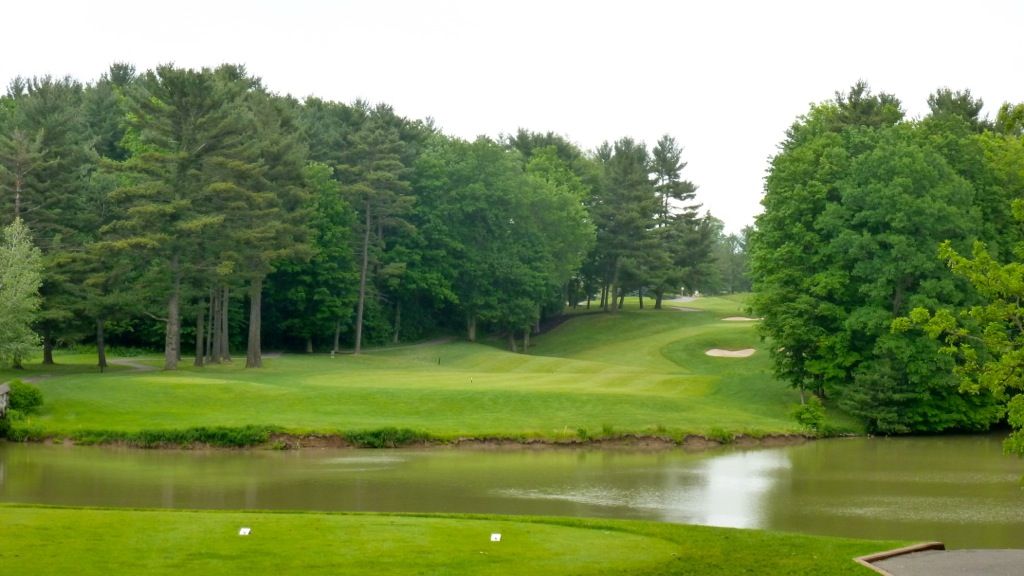
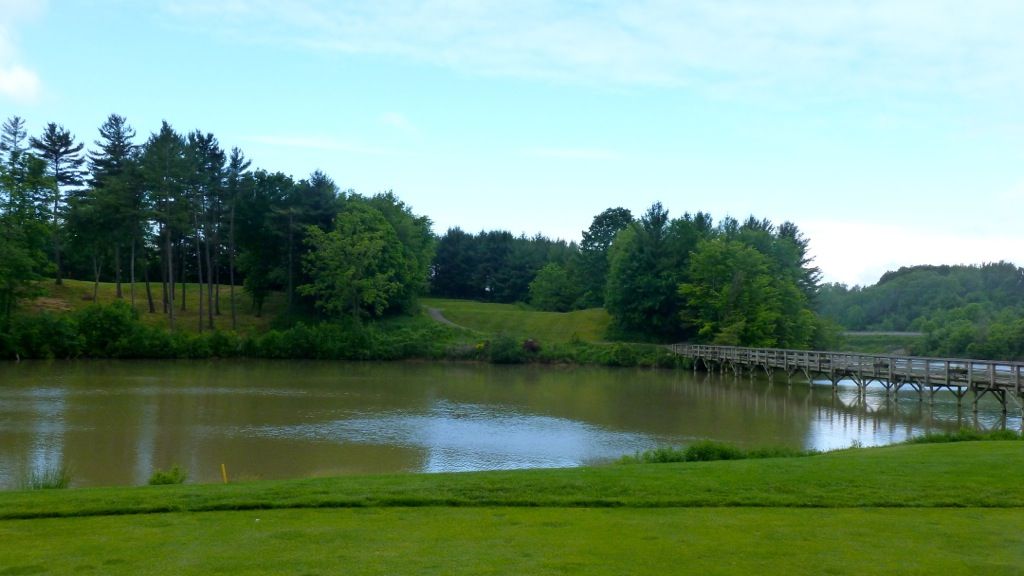
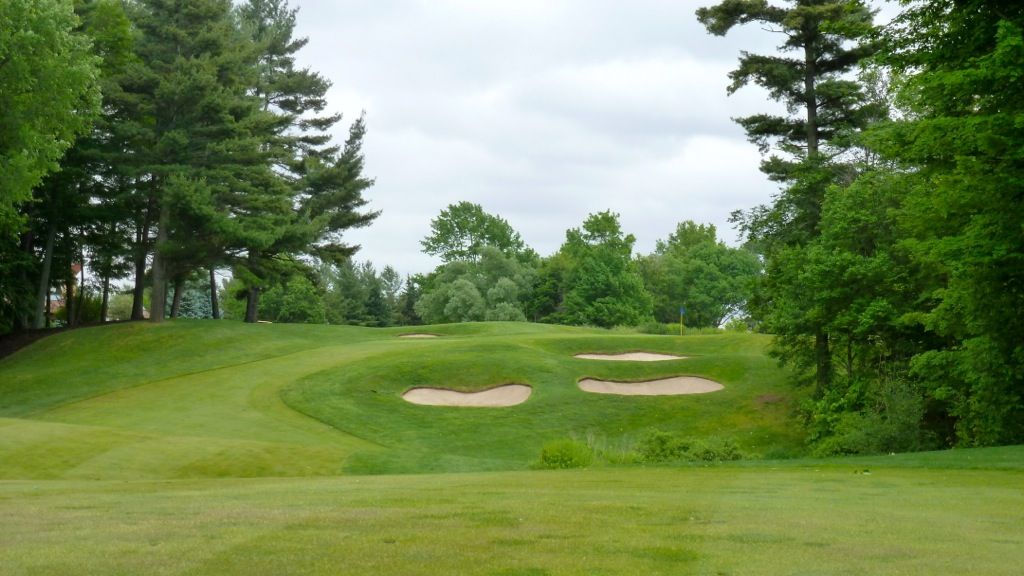
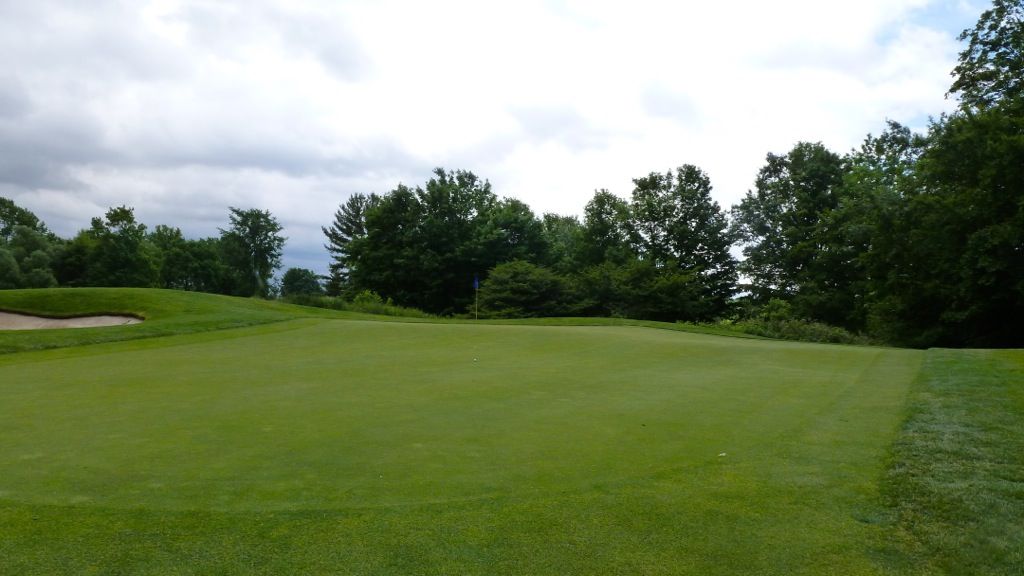

No comments:
Post a Comment